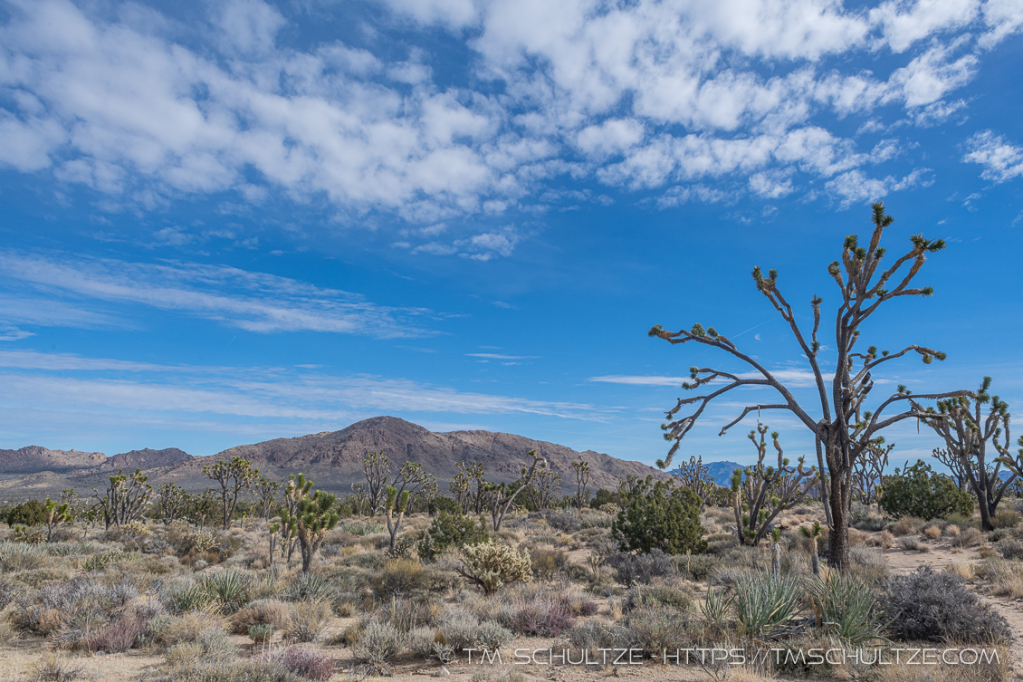On August 15, lightning started a devastating fire (called the Dome Fire) that burned the entirety of Mojave National Preserve’s Cima Dome.
The Cima Dome is usually seen from Interstate 15, where the long shape of the mountain is easily viewable.
This area hosted one of the largest Joshua Tree forests in the world. In fact, the Joshua Tree forest in Cima Dome had larger and more prevalent trees than the National Park. The fire burned most of them, estimated to be over 100 years old.
This location is also interesting because the conjectured subspecies of Joshua Tree, yucca brevifolia var jaegeriana, exists here. These trees exhibit much different behavior. They are typically shorter, and create many, many branches. They are pollinated by a subspecies of the same Yucca Moth.
I typically visited the Cima Dome via the Teutonia Peak Trailhead off Cima Road. This is the Northeast area of the Dome. In the ghost-town of Cima, you can follow some of the side roads to access the Southern area of the Dome. As recently as 2006, Cima still had a functioning post office.
This post is a sad ode to the beauty of the Cima Dome. As with other fire complex areas, the grasses will come back. In particular, it is expected that the non-native and invasive grasses will come back quickly. These will out-compete the native vegetation, and this will include the Joshua Trees.
Creating A Joshua Tree Forest
I also read something interesting. Some scientists believe that the extensive ranching that has occurred in the area contributed to the size of this forest.
In other words, the size and depth of this forest occurred because ranching activities like grazing self-selected the Joshua Trees for growth and unnatural expansion. Cattle ate grasses and shrubs that they preferred, leaving the Joshua Trees without competition on the ground. This helped create a much larger forest than usual.
Than, when the native grasses were consumed, invasives like Red Broom and others had little ground competition from the native vegetation. This large Joshua Tree forest and ground cover of invasive plants then created conditions that were a perfect fire storm when lightning rolled through the Northern Mojave in August.
The really strange thing to consider, then, is that the Joshua Tree forest I have long enjoyed is probably not a natural phenomenon. This thought has implications far beyond the Dome Fire. What do I love about the outdoors that hasn’t already been permanently altered by human activity? The answer, likely, is nothing. So sometimes being a landscape photographer is really documenting what humans have done to the “natural world.”
Cima Dome and Yucca Brevifolia var Jaegeriana Gallery
Related Photography Galleries
Mojave National Preserve Image Archive (Non-Portfolio)
T.M. Schultze is a San Diego-based photographer, traveller, and writer. He writes, photographs, and draws things of the outdoors that have inspired humans for thousands of years. He co-authored the Photographer’s Guide to Joshua Tree Park which can be purchased here.













Great photos and a well written article.